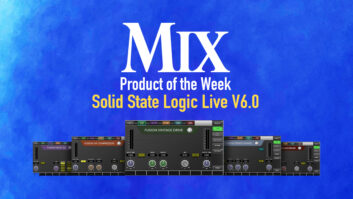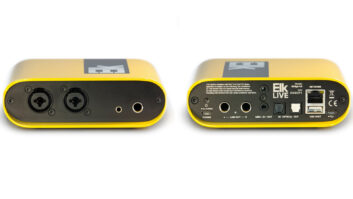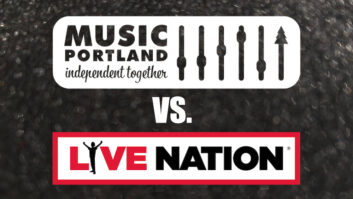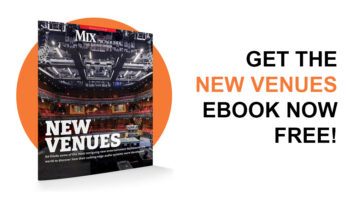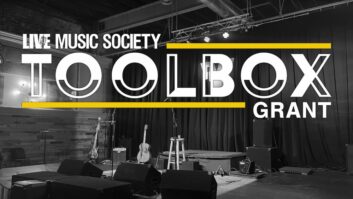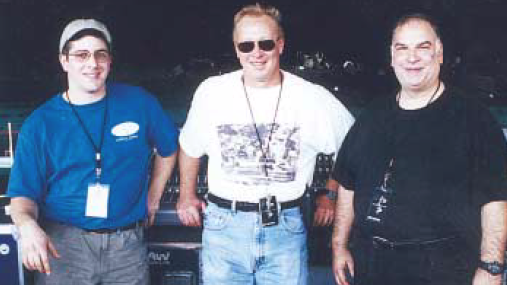
From the October, 2001 issue of Pro Sound News.
Camden, NJ (October, 2001)—Tony Bennett may have left his heart in San Francisco, but he keeps trying to find it in the strangest places—like Camden, NJ recently, when his summer tour co-headlining with k.d. lang stopped at the Tweeter Center for the Performing Arts. Tom Young, Bennett’s FOH engineer for the last seven years, was on hand to oversee the proceedings, with the assistance of system engineer/crew chief Dan Fabrizi and system tech Brian Naab, using a system provided by Altel Systems (Brewster, NY).
While the venue typically hosts rock and R&B acts, Bennett’s music still fit comfortably in the wide-seated shed. Having performed for more than 50 years, Bennett’s emphasis now, as back then, is on the music, so Young finds himself mixing the show to provide “sound reinforcement” in its purest form.
“He can swing from 70 dB to peaking at 95-97 on crescendos,” noted Young. “I’ve done this for a long time, and it is definitely the quietest show I’ve ever mixed—but it works. That’s the way this kind of music is supposed to be brought across, because if you start up where the dynamics hit 110, that won’t work. He goes anywhere from a whisper to a roar, and you have to be able to capture that.”
The production carried a relatively simple FOH setup, centered around a Yamaha PM4000 console using 24 channels to mix the quartet. Adorning either side of the stage was a cluster of 10 Funktion One Resolution 5 loudspeakers, hung in two rows of five wide, with five underhangs. According to Naab, “Each cluster, with the fly bar, comes to about 1,400 pounds, so we’re able to hang the entire cluster off of a one-ton motor; that’s kind of nice. We’re also running five double-18s, the Funktion One F218 subs. And finally, for frontfill, we’re using the Resolution 4, which is the 50 degrees wide, 25 in the vertical, brother to the Res 5, which is 25 by 25 degrees.”
While the PA was more than adequate, the monitor situation was bare-bones at best, to Bennett’s liking. Like many performers, Bennett cut his teeth performing to house sound, so he typically eschews wedges. Instead, his quartet always positions itself around the stage so the players can hear each other acoustically without reinforcement.
“I worked with Sinatra for 13 years, and he did it the same way,” Young noted. “The singers of that era were just used to hearing the PA, so if you can create that sound environment for them, it works really well. They like a close marriage between the PA and the stage. They don’t want loud, in-your-face sound; they want to hear everything acoustically and feel the interaction of the people and the PA, too.”
Accordingly, the only monitors on-stage were four Resolution 2s, used as flown sidefills. The loudspeakers only reproduced Bennett’s voice, so that the other band members would be certain to hear him. Despite the boxes’ location, Young found little difficulty with the arrangement: “We typically delay the PA to the upstage fills, so actually zero time for the system starts with those and we delay the PA to that so that it all comes off as a whole.”
When mixing an old-school act like this, miking becomes of the utmost importance. Accordingly, Bennett used a Sennheiser SKM5000 wireless, as he has for the last five years. “He never trusted wireless mics,” Young said, “but he created that A&E Live By Request show and he had to use wireless for it. This wireless is a condenser type of capsule, and it doesn’t have a lot of proximity effect, so it works well for him because he likes a mic that doesn’t change too much in color when it’s not right at his mouth.”
In fact, Bennett liked it so much that he used the wireless mic to record live in the studio for his Bennett Hot and Cool album a few years back. More recently, he switched to a Neumann KMS105 on a wire when he recorded live for his latest disc, Playin’ With My Friends: Bennett Sings the Blues, due out in November.
Back on stage, however, there were a variety of mics in use. The piano was picked up by a pair of AKG C414s on a high and a low tape bridge, and Young was also using Swiss-made Schertler pickups inside. Drums were picked up by a slew of Audio-Technica microphones, excepting the overheads, which were Neumann KM184s. Young commented, “I like the new live A-T mics—I use a 4083 on guitar, for instance. On the acoustic bass, however, I have a new Sennheiser SKH800 pencil condenser. It’s right next to the drum kit, but the isolation I get on it and the sound are incredible. It’s a multi-pattern microphone designed for recording and live, and the cardioid pattern has fantastic rejection from the back and sides.”
Much as Bennett’s repertoire focuses on uncomplicated, elegant songs, Young mixed the act in a likewise simple, straightforward fashion: “The idea with Tony Bennett—or any good singer—is that you want to make the singer sound like himself. Even when I first met Tony, he’d stand next to me on the stage, sing without the microphone, and say, ‘Just make it sound like that.’ And that’s what we do.”
